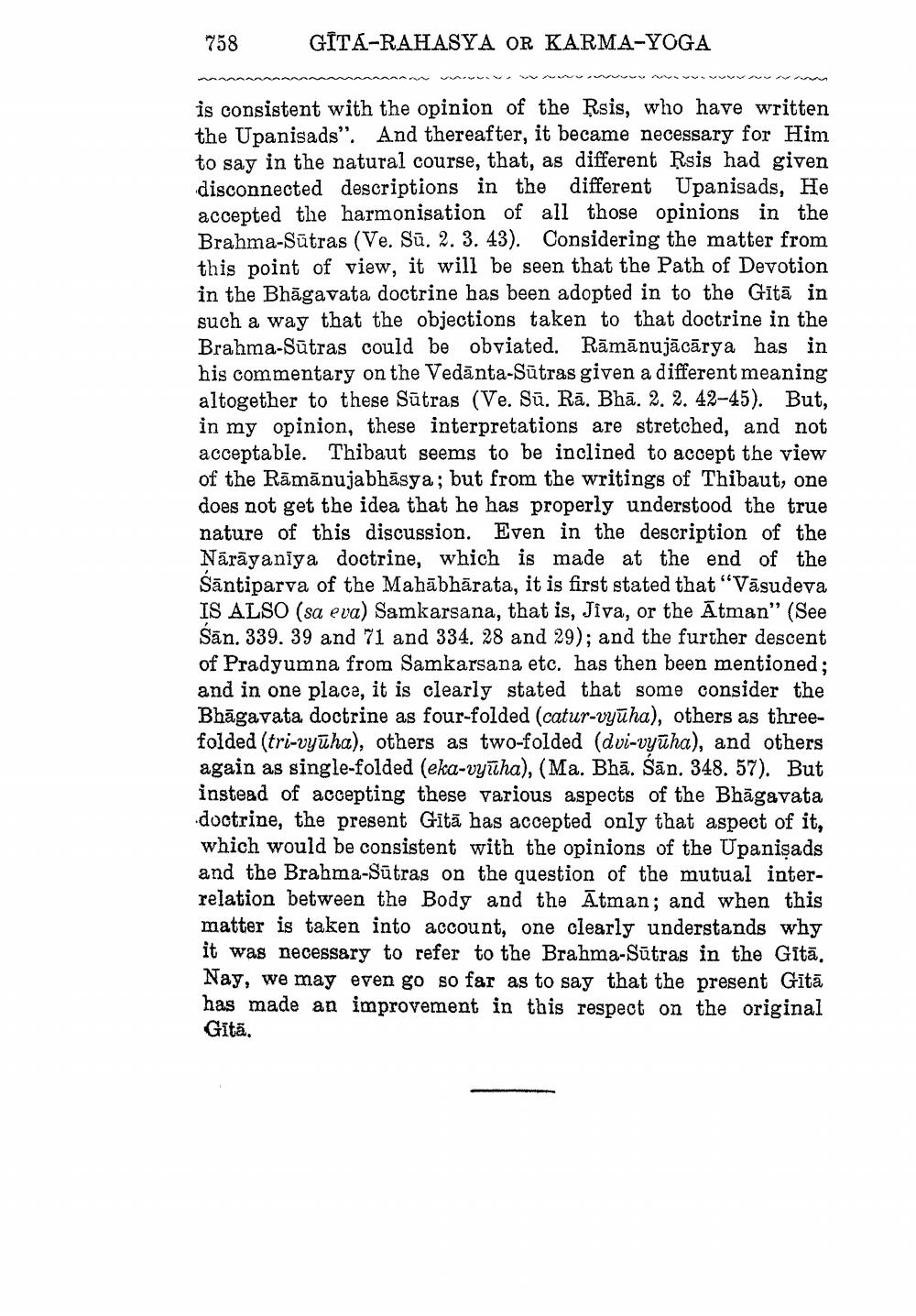________________
758
GITA-RAHASYA OR KARMA-YOGA
is consistent with the opinion of the Rsis, who have written the Upanisads". And thereafter, it became necessary for Him to say in the natural course, that, as different Rsis had given disconnected descriptions in the different Upanisads, He accepted the harmonisation of all those opinions in the Brahma-Sūtras (Ve. Sū. 2. 3. 43). Considering the matter from this point of view, it will be seen that the Path of Devotion in the Bhāgavata doctrine has been adopted in to the Gītā in such a way that the objections taken to that doctrine in the Brahma-Sūtras could be obviated. Rāmānujācārya has in his commentary on the Vedānta-Sūtras given a different meaning altogether to these Sūtras (Ve. Sū. Rā. Bhā. 2. 2. 42-45). But, in my opinion, these interpretations are stretched, and not acceptable. Thibaut seems to be inclined to accept the view of the Rāmānujabhāsya; but from the writings of Thibaut, one does not get the idea that he has properly understood the true nature of this discussion. Even in the description of the Nārāyaniya doctrine, which is made at the end of the Sāntiparva of the Mahābhārata, it is first stated that "Vāsudeva IS ALSO (sa eva) Samkarsana, that is, Jiva, or the Ātman" (See Sān. 339. 39 and 71 and 334. 28 and 29); and the further descent of Pradyumna from Samkarsana etc. has then been mentioned; and in one place, it is clearly stated that some consider the Bhāgavata doctrine as four-folded (catur-vyūha), others as threefolded (tri-vyuha), others as two-folded (dvi-vyūha), and others again as single-folded (eka-vyūha), (Ma. Bhā. Sān. 348. 57). But instead of accepting these various aspects of the Bhāgavata doctrine, the present Gītā has accepted only that aspect of it, which would be consistent with the opinions of the Upanişads and the Brahma-Sūtras on the question of the mutual interrelation between the Body and the Atman; and when this matter is taken into account, one clearly understands why it was necessary to refer to the Brahma-Sūtras in the Gitā. Nay, we may even go so far as to say that the present Gītā has made an improvement in this respect on the original Gītā,




